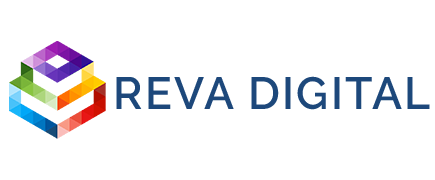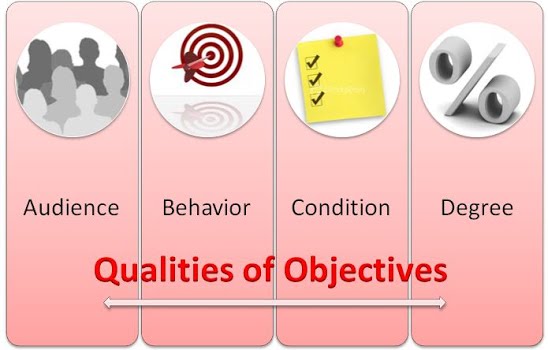How to Set Clear Corporate Learning Objectives
Corporate learning objectives are what a learner will learn, understand and be in a position to perform as a result of taking part in a learning process. Properly written learning objective are critical to any given learning process. They guide how the learning activities are made and the choice of learning materials among other things. In a nutshell, clear corporate learning objectives:
- Help provide clarity about the purpose of the training program
- Guide the formulation and development of the appropriate curriculum, content and teaching methods
- Help develop accountability between the instructors and learners
How to Set Clear Learning Objectives
Once you have set the goals and scope of a corporate training program, it is important to define specific information, attitudes, knowledge and skills to be attained by the participants in the program. These form the basis for the objective the training program. To set clear learning objective, it is important to understand what objectives are made up of.
Components of Learning Objectives
Learning objectives are known to be made up of a number of components. The most known components are those identified by an educational theorist Robert Marger. The major components are audience, condition, standards and behavior. These components entail:
- Audience:
Learning objectives should always specify the audience they are intended to serve. Usually, the audiences are participants in a given training program. For example in the phrase “learners will be able,” the learners are the audience. Although there may be different groups of participants in a training program such as learners, instructors, supervisors and facilitators, the objective should describe the exact intended audience. This helps in making the objectives measurable.
- Behavior
Behaviors are observable actions that are supposed to be accomplished by the end of a training session or program, and should be demonstrated during the program. To write a clear learning objective, it is important to carefully choose the most appropriate word that describes the behavior displayed by the participants in the program after the training is done. The action verb that forms part of your objective should be able to fully describe the specific behavior that is expected from a participant after undergoing a training program.
Examples of action verbs that you might use include ‘explain’, ‘identify’, ‘analyze’, ‘list’, ‘code’, and ‘present’ among others. These verbs are the most important part of any learning objective. This is because they identify what has achieved by the end of the training program, and presumably what they are ready to perform moving forward. It is therefore important to avoid general verbs such as ‘know’ and ‘understand’ as they may not be measurable and thus present a lot of problems when it comes to assessing the effectiveness of training program. For instance, it is better to have an objective that says, “Learners will be able to list important markets for electronic products,” rather than “learners will know the important markets for electronic products.”
- Standard:
Learning objectives should identify to what standards a given skill or knowledge must be achieved by the learner. In other words, the standards used in objectives give the proficiency to which the training will elicit in the learners. It is, therefore, important for you to give the specifics of how a learner will be able to perform a given task in terms of quality and quantity after undergoing a given training program. For example in the objective, “…the learners should be able to identify 95% of errors…” the phrase ‘95% of errors’ is the standard.
- Condition:
A condition in an objective specifies the conditions under which given tasks should be performed. These are the actual conditions a given task should take place. The conditions may include time and place. An example of a condition in an objective is “after this program the learners should be able to take less than five minutes in successfully predicting the performance of a given stock,” here the phrase “less than five minutes” represents the condition.
An Example of an illustrated Learning Objective
| By the end of this training program, all lab technologists in the hospital will be able to correctly detect HIV using a Blot test.
|
|
| Component of a leaning objective | Name of the component |
| All lab technicians in the hospital | Audience |
| Correctly | Standard |
| Detect HIV | Behavior |
| By the end of this program | Condition |
How to make Your Learning Objectives SMART
Clear learning objectives should be SMART (specific, measurable, action-oriented realistic and Time-bound). Once you have developed your learning objectiveS, it is important to check and ensure that they are all SMART. Here is how to ensure that your corporate learning objectives are SMART.
- Specific
Go through your objectives and ensure that they clearly describe the attitudes, skills and knowledge that the learner is expected to demonstrate after undergoing a given training program.
- Measurable
Check your objectives to ensure that the achievement of the objective can actually be measured by an assessment strategy such as observation, test items or problem-solving exercises. It is important for objectives to be measurable otherwise it would be difficult to assess the success of the training program.
- Action-oriented
Ensure that your objectives are action oriented. They should all have an action verb that demonstrates the skills. Knowledge and attitudes to be acquired
- Realistic
Your objectives should be reasonable. Ensure that they are all reflect reasonable expectations in terms of the attitudes knowledge and skills to be acquired within the given time frame and training scope.
- Time-bound
The learning objectives should have a time limit. This is usually done by using the phrase “by the end of this training”. This can be done by any other means, but the time frame must be specified.
Example of a SMART learning objective
By the end of thIS program (time-bound), all participants will be able to describe (action-oriented) four major factors (specific, measurable, reasonable) that affect foreign markets for electronics.
Source: Network Centric(NCS) (2008)

